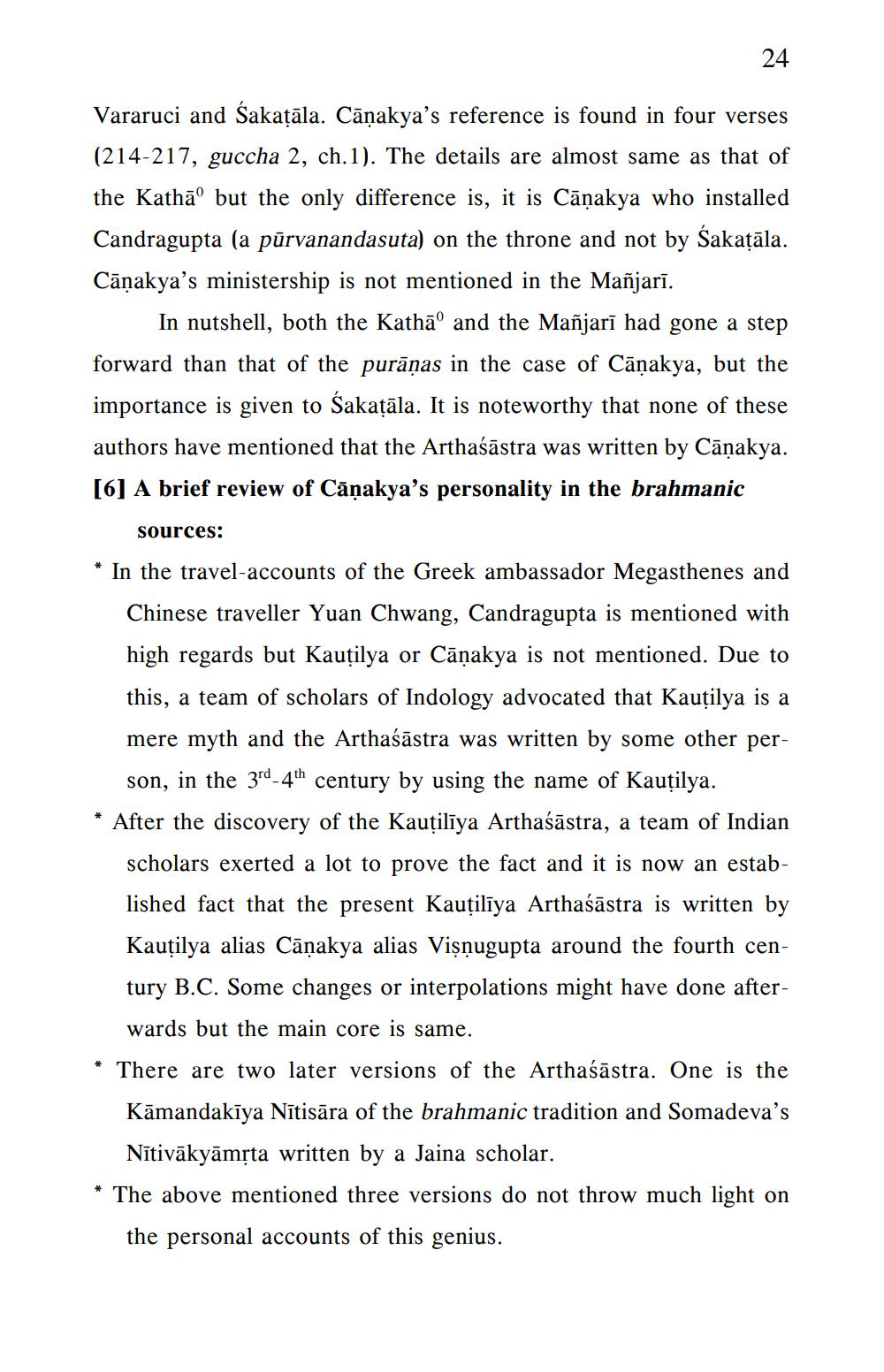________________
24
Vararuci and Sakațāla. Cāņakya's reference is found in four verses (214-217, guccha 2, ch.1). The details are almost same as that of the Kathā° but the only difference is, it is Cāņakya who installed Candragupta (a pūrvanandasuta) on the throne and not by Sakațāla. Cāņakya’s ministership is not mentioned in the Mañjarī.
In nutshell, both the Kathāo and the Mañjarī had gone a step forward than that of the purāṇas in the case of Cāņakya, but the importance is given to Sakațāla. It is noteworthy that none of these authors have mentioned that the Arthaśāstra was written by Cāņakya. [6] A brief review of Cāņakya's personality in the brahmanic
sources:
* In the travel-accounts of the Greek ambassador Megasthenes and
Chinese traveller Yuan Chwang, Candragupta is mentioned with high regards but Kautilya or Cāņakya is not mentioned. Due to this, a team of scholars of Indology advocated that Kautilya is a mere myth and the Arthaśāstra was written by some other per
son, in the 3rd_4th century by using the name of Kautilya. * After the discovery of the Kautilīya Arthaśāstra, a team of Indian
scholars exerted a lot to prove the fact and it is now an established fact that the present Kautilīya Arthaśāstra is written by Kautilya alias Cāņakya alias Visnugupta around the fourth century B.C. Some changes or interpolations might have done after
wards but the main core is same. * There are two later versions of the Arthaśāstra. One is the
Kāmandakiya Nītisāra of the brahmanic tradition and Somadeva's
Nītivākyāmsta written by a Jaina scholar. * The above mentioned three versions do not throw much light on
the personal accounts of this genius.




